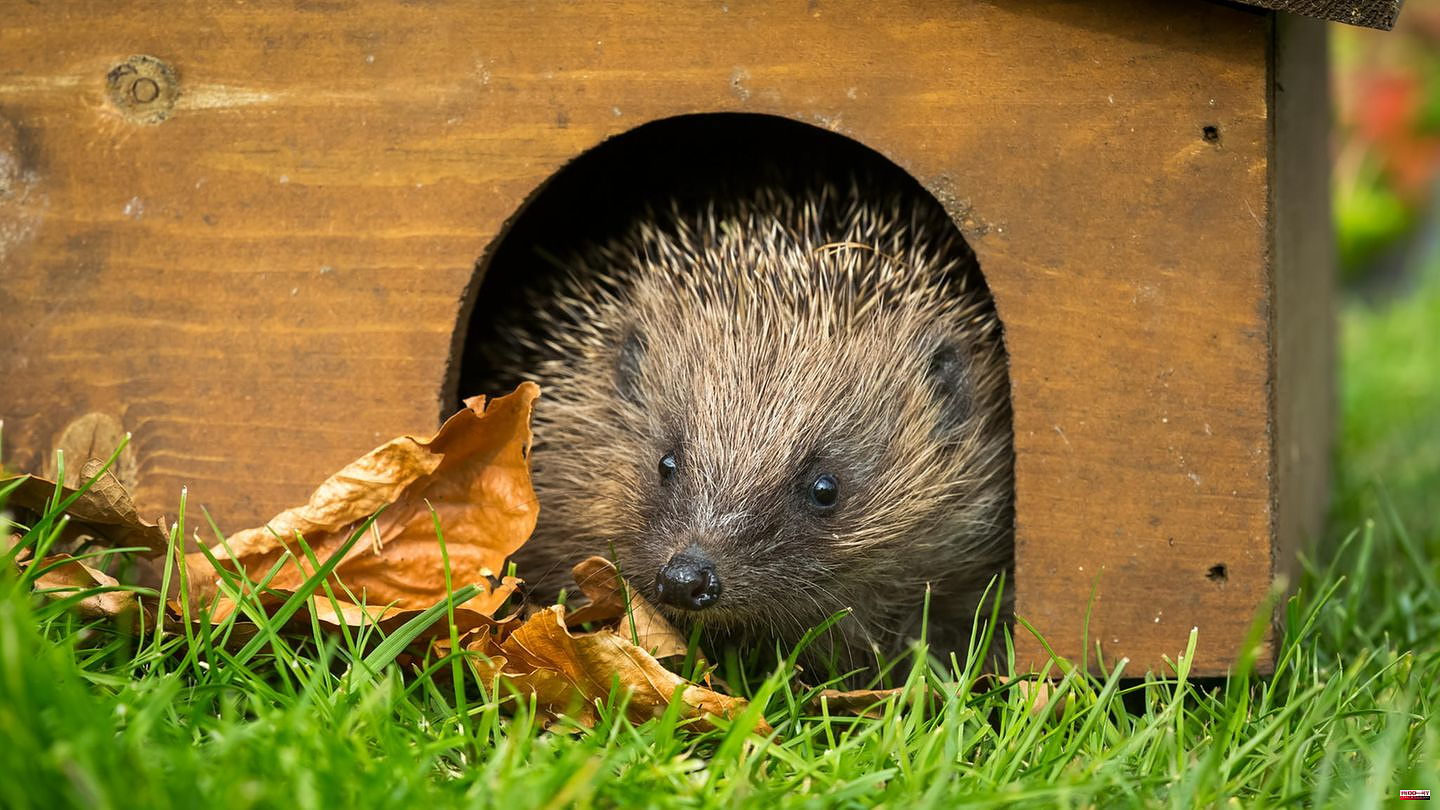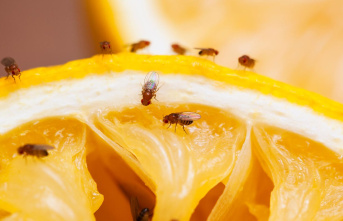Old leaves and dead wood offer a hedgehog sufficient protection in winter. Unfortunately, fewer and fewer garden owners like tree waste lying around, so leaves and branches are regularly removed from the lawn. For the animals, whose natural habitat is shrinking every year, finding suitable shelter is becoming more difficult than ever. Especially since important food sources such as beetles and snails, which normally frolic in the piles of leaves, are also disappearing. It is all the more important in autumn to offer the little garden visitors more protection - for example with a hedgehog house.
The right time: When the temperatures drop, hedgehogs start looking for suitable winter quarters. For this reason, you should place the shelter in the garden or on the terrace in late autumn (i.e. from October, but at the latest in November). It is important to know that the prickly animals are loners and therefore cannot move into a hedgehog house in pairs. So if you want to care for more than one hedgehog, you would have to set up several houses outside.
The right location: In order for a hedgehog to feel comfortable in its new home, the house should be placed in a quiet corner of the garden. The location must also be dry so that rain and snow do not damage the animal. Too much sun is also not good, as otherwise the hedgehog could wake up from its hibernation – due to the warmth, not because of the incidence of light. The entrance to the hedgehog house should face south-east if possible, so that wind and weather cannot penetrate the interior.
Hedgehogs also have to relieve themselves from time to time during hibernation, but they don't go out to do this - they go to their quarters. To keep the shelter reasonably clean, a hole should be drilled in the bottom of the house (if there isn't one) and fill it with some sand or pebbles. This allows the urine to drain better. In addition, the roof should be removable in case you need to check on an injured hedgehog, add more straw or add some hedgehog food. In the following we present four different models:
1. Hedgehog house made of beech wood
This igloo-shaped hedgehog house made of impregnated beech wood has additional insulation on the inside to protect the animal from cold temperatures in winter. It has a narrow entrance so that its natural predators such as badgers, martens and foxes cannot get through. On the back there is a large flap that can be opened, for example, for cleaning.
2. Igelhaus aus Tannenholz
According to the manufacturer, Dehner's hedgehog house made of robust fir wood has a weatherproof roof that can also be removed to make cleaning easier (after hibernation). The interior consists of two separate chambers to allow the animal to better protect and retreat. With a net weight of just 300 grams, the hedgehog house is very light.
3. Hedgehog house made of multiplex panels
This model is the largest of our round of introductions and is therefore suitable for a whole family of hedgehogs - although the animals are loners, they can also use the shelter in spring to build nests for their offspring. According to the manufacturer, the hedgehog house was made of weatherproof multiplex panels, and there is also a removable roof and two separate entrances.
4. Pine hedgehog house
Conni Oberkircher's has a model made of glazed pine wood. It should be weather-resistant and protect the animal inside from intruders - this is made possible by a protective wall. It is important to know that this hedgehog house is delivered in individual parts and must be assembled. Since there is no bottom, it should be covered with straw or dry leaves.
Tip: You can get the right hedgehog food in pet supplies. With a voucher from Fressnapf, you can get the products even cheaper.
In order for the defenseless animals to survive the winter, they need a safe and dry shelter. If you want to build it yourself, you should consider the following points:
And one more tip: Once the hedgehog has withdrawn into its house and started hibernating, it should no longer be disturbed.
Source: Naturschutzbund Deutschland e.V.
This article contains so-called affiliate links. There is more information here.












